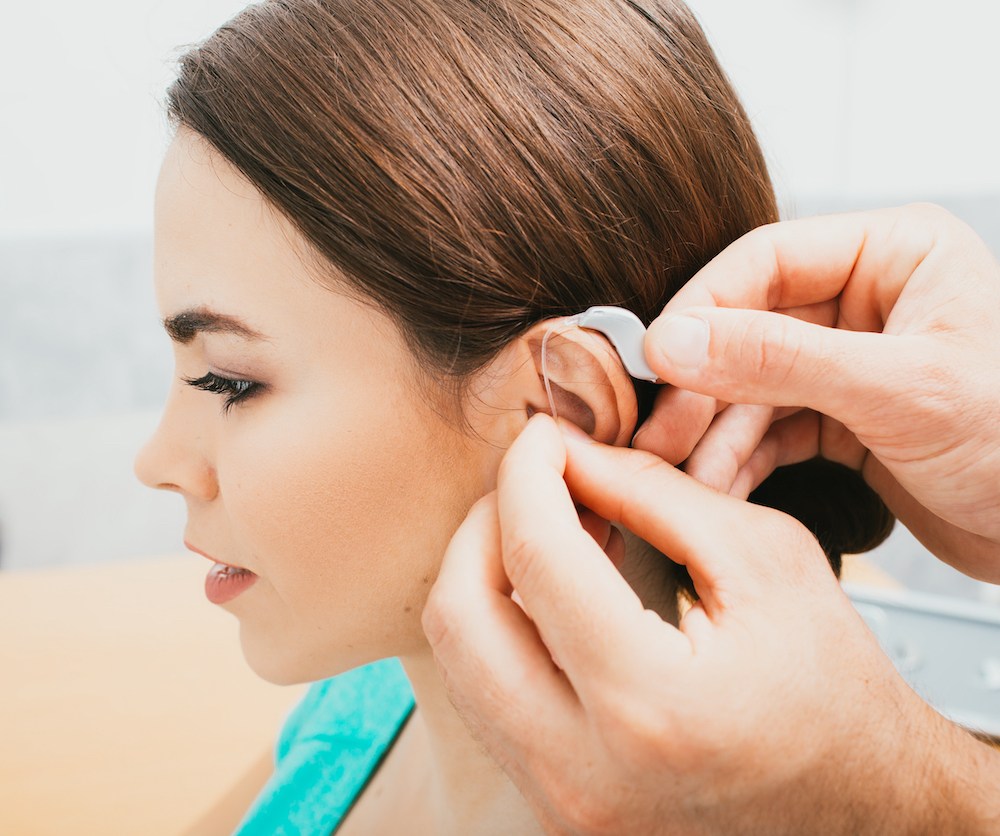Biometric Hearing Aids: What Are They and How Do They Work?
Your hearing loss is as unique as you are, and so should be the solution.

By: admin | July 20, 2023
In today’s world, where technology plays a critical role in our day-to-day lives, we rely on various devices to enhance our experiences. For individuals living with hearing loss, hearing aids serve as crucial everyday tools, effectively transforming a realm of hushed sounds into a vivid soundscape filled with animated conversation, heartwarming laughter and soul-stirring music. Given their invaluable function, it is imperative to ensure the longevity and optimal performance of these essential devices.
By committing to proper care and maintenance, you can significantly extend the life of your hearing aids, ensuring they remain in top shape to assist you for many years. Let’s explore in greater depth four effective strategies that will help prolong the lifespan of your hearing aids, keeping them functioning optimally.
Cleanliness is more than a matter of aesthetics when it comes to your hearing aids. By incorporating a daily cleaning routine, you can eliminate earwax or other debris that can accumulate over time. These particles can obstruct the microphone or speaker, hindering the performance of your hearing aids. This is particularly relevant for in-the-ear (ITE) and in-the-canal (ITC) hearing aids, as these styles sit within your ear canal. Meanwhile, behind the ear (BTE) necessitate focused attention to the earmold and tubing during cleaning.
It is vital to use a soft, dry cloth for cleaning to prevent any potential damage. Avoid using cleaning agents or chemicals, as these can harm your device’s delicate components. Specialized cleaning tools, available through your hearing care provider, can be a useful addition to your cleaning routine. A clean hearing aid not only functions better and lasts longer but also contributes to a clearer and more enjoyable listening experience.
The importance of proper storage becomes apparent when considering the delicate electronic components within your hearing aids. When not in use, your hearing aids should be stored in a dry, cool place, sheltered from direct sunlight. Sunlight can heat the device, potentially damaging the intricate internal workings. Furthermore, areas prone to high humidity, such as bathrooms or kitchens, should be avoided. These environments can foster moisture accumulation, which can lead to damage to the sensitive electronic parts within your hearing aids.
Before storing your devices, it’s also essential to remove the batteries. This step is crucial to prevent any risk of leakage or corrosion that could impair the battery compartment and negatively impact the device’s functionality. The batteries themselves should be stored separately in a cool, dry place to maintain their efficiency. Consider using a designated hearing aid storage case for added protection and convenience.
Environmental elements such as moisture and extreme temperatures can be detrimental to the functionality and lifespan of your hearing aids. It is advised to avoid wearing your devices while swimming, showering or participating in vigorous activities that may induce excessive sweating. Even high-humidity environments can cause moisture to condense within your hearing aids, potentially causing damage. In the event of unexpected exposure to moisture, utilizing a hearing aid dehumidifier is highly recommended.
This particular device is designed to extract moisture from your hearing aids, helping to prevent damage and prolong their life. Furthermore, during winter months or in extreme heat, be mindful of your hearing aids’ exposure to these conditions. Sudden changes in temperature can cause condensation or can stress the materials of your hearing aids, potentially reducing their life expectancy.
Much like you schedule routine health check-ups, your hearing aids warrant regular professional evaluations. These periodic assessments by a hearing professional serve as preventive maintenance for your hearing aids. They can adjust your hearing aids, clean parts that may be challenging to reach home and catch any potential issues before they escalate into larger, potential repairs.
Regular check-ups are not just about troubleshooting and maintenance; they also ensure your hearing aids are always calibrated to your current hearing needs. As our hearing can change over time, these adjustments guarantee that your hearing aids continue to provide optimal benefit. This proactive approach not only extends the lifespan of your hearing aids but also guarantees that they’re always performing at their best, providing you with an outstanding hearing experience.
Keen on learning more? At Life Hearing & Tinnitus Health Centers, we are committed to helping you make the most out of your hearing aids and enhancing your overall hearing health. For more information, don’t hesitate to call us today at (239) 963-2429. Our dedicated team of hearing professionals is always eager and ready to assist you.
Tags: hearing aid basics, hearing aid repair, hearing aid styles

Your hearing loss is as unique as you are, and so should be the solution.
By: admin | April 30, 2024

Hearing health is intricately linked to our overall well-being, yet the
By: admin | February 28, 2024

Hearing tests are necessary to assess your auditory function, but only two
By: admin | December 28, 2023
